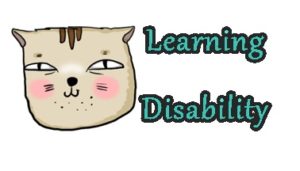 What is Learning Disability
What is Learning Disability
Learning disabilities affects the learning capability of an individual. It is a neurologically-based processing problems that interferes with learning basic skills such as reading, writing and/or math as well as abstract reasoning, long or short term memory and attention. An individual with learning disability can affect everyday activities such as household tasks, socializing, managing finances, and relationship with family, friends and workplace. Learning disability can be mild, moderate or severe so the level of support need depends on the individual. A person with mild learning disability may only need support such as getting a job while some person with severe disability may need fulltime care and support in all aspect of his life.
A children with learning disability may cope if they have given the right therapy and support and they may become successful and achieve their goals in the future.
Types of Learning Disability
1. Language Processing Disability
A child with language processing disorder (LPD) have difficulties with both receptive and expressive language such as difficulties with learning the alphabet, physical address and phone number.
2. Dyslexia
It is a learning disability that a child affects reading, writing and spelling ability. It can be a lifelong problem but it only needs a support to improve reading and writing skills. Dyslexia is also known as Language-Based Learning Disability
3. Dysgraphia
A person with dysgraphia affects his handwriting ability and fine motor skills. These problems includes illegible handwriting, inconsistent spacing, poor spatial planning on paper, poor spelling and difficulty composing writing.
4. Dyscalculia
It is a learning disability that a person have a problem ability to understand numbers and learn math facts. They have poor comprehension of math symbols, struggle with memorizing and organizing numbers, trouble counting number and telling time.
5. Visual Motor Deficit
It a disorder that affects the understanding of information that a person sees, or the ability to draw or copy.
6. Non-Verbal Learning Disabilities
It is learning disability that characterized by a discrepancy between higher verbal skills and weaker motor, visual-spatial and social skills. The children with this disability has trouble recognizing nonverbal cues including facial expression and body language, shows poor psycho-motor coordination, and may have poor coordination.
7. Auditory Processing Disorder
It also known as Central Auditory Processing Disorder that affects 5% of school aged children. A kid with Auditory Processing Disorder cannot process what they hear in the same way other kids do because their ears and brain do not fully coordinate. They may not recognize subtle differences between sounds in words even the sound are loud and clear.
